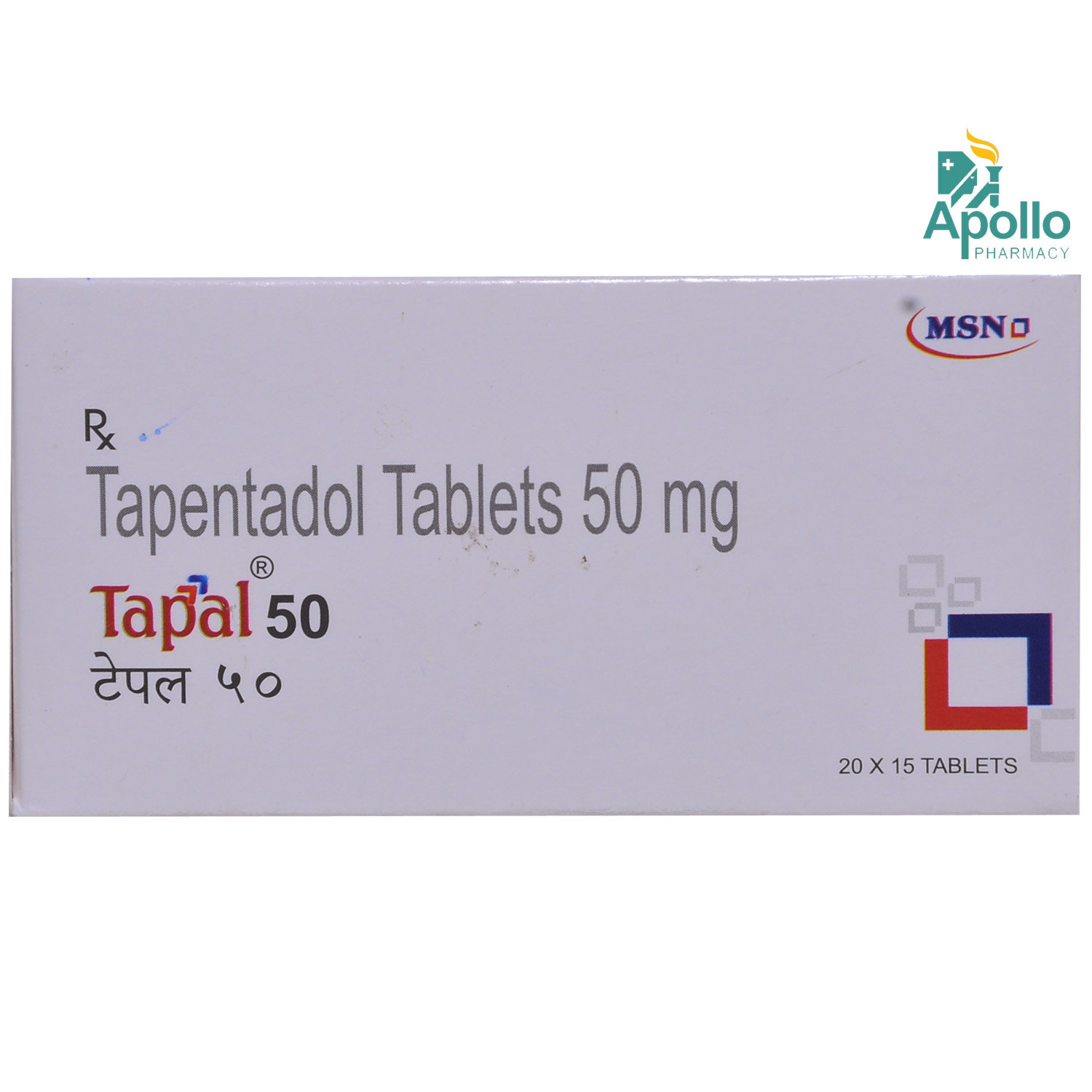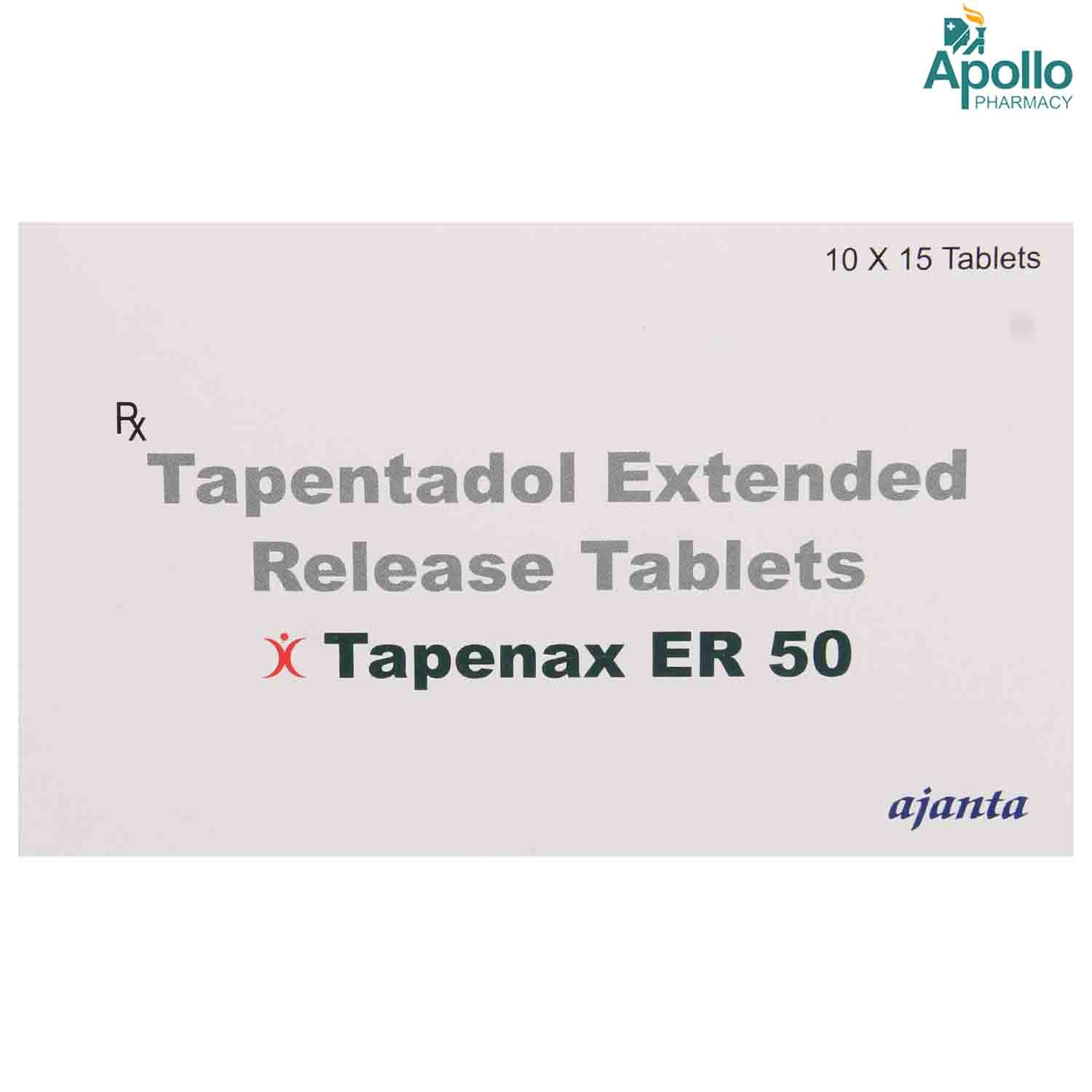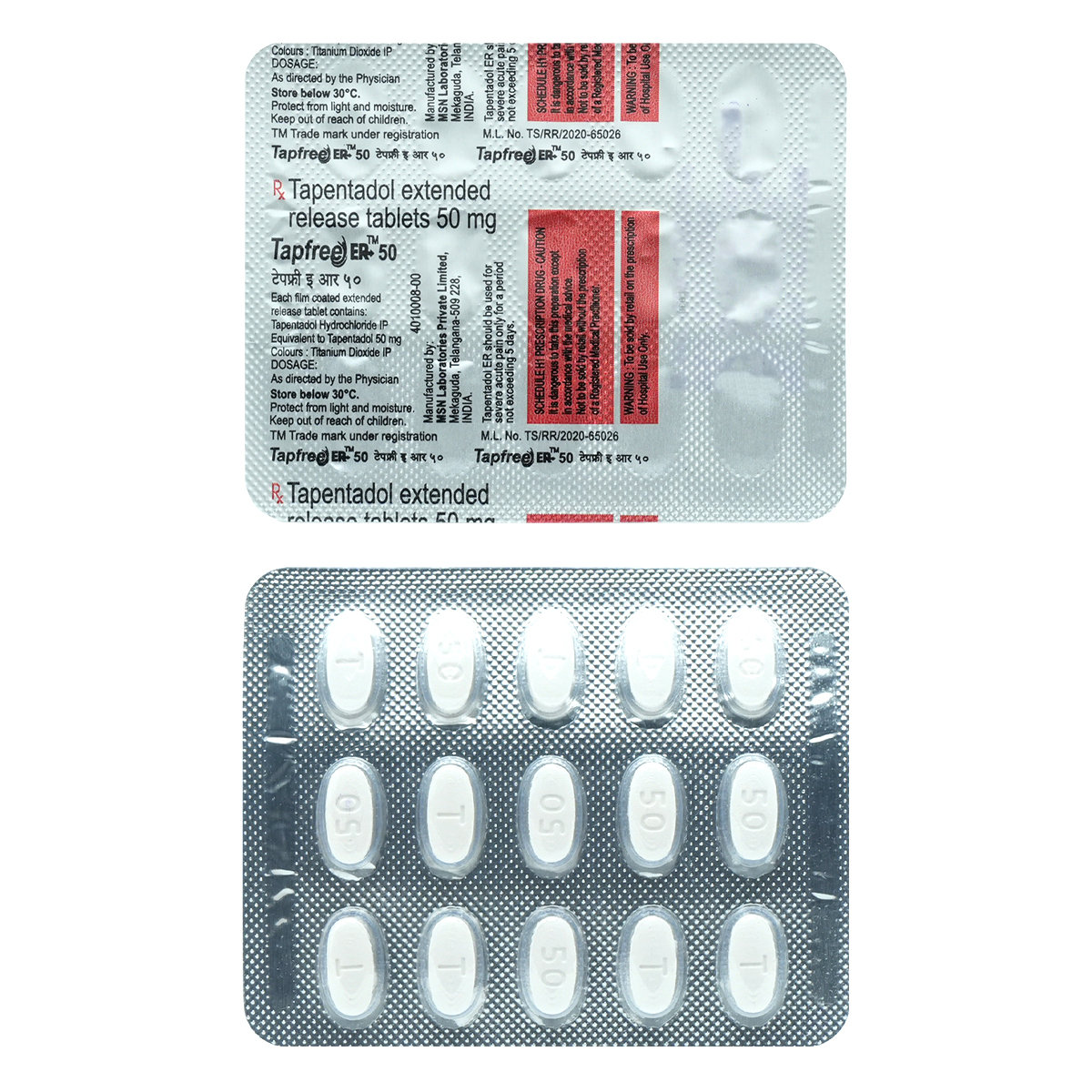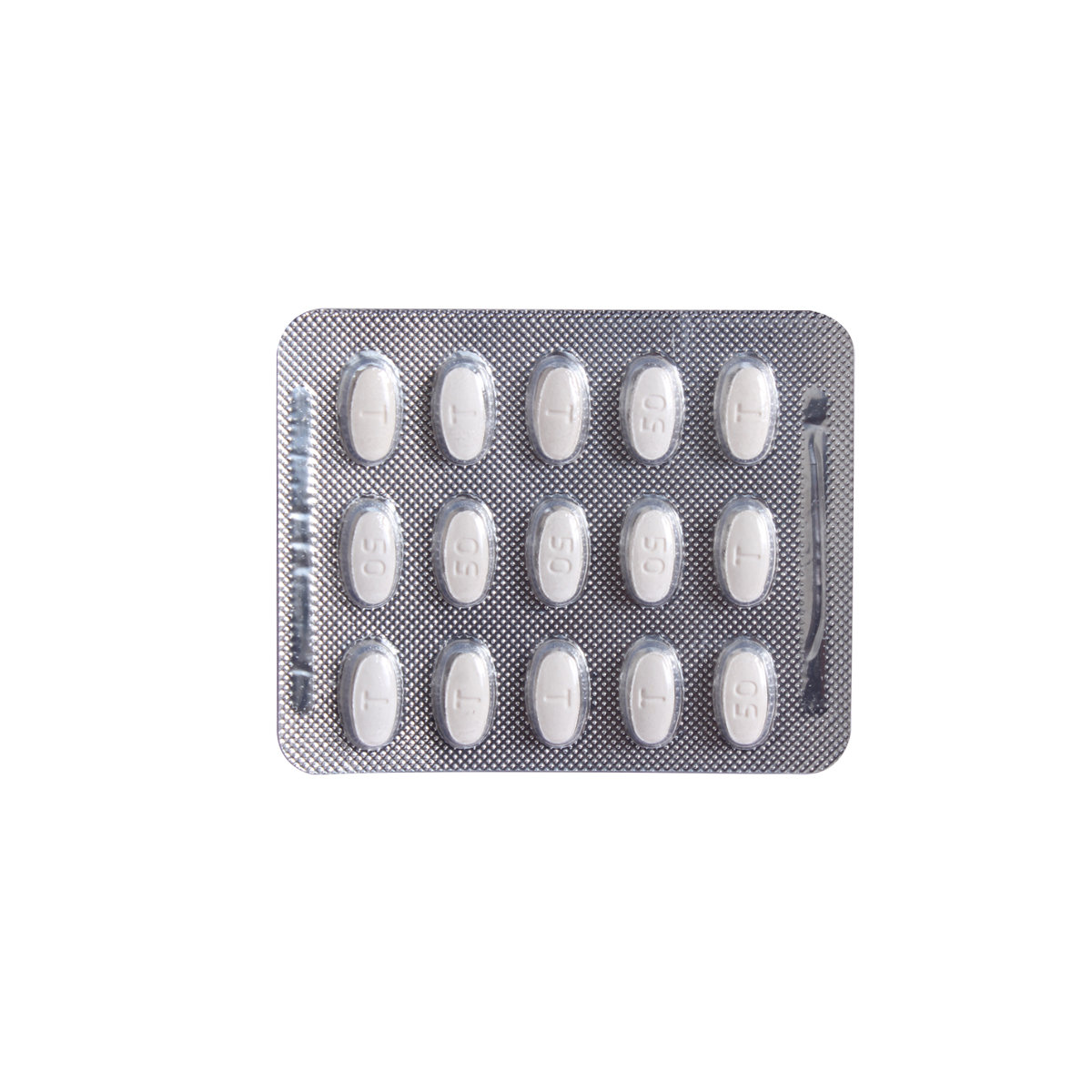Tapal-ER-50 Tablet
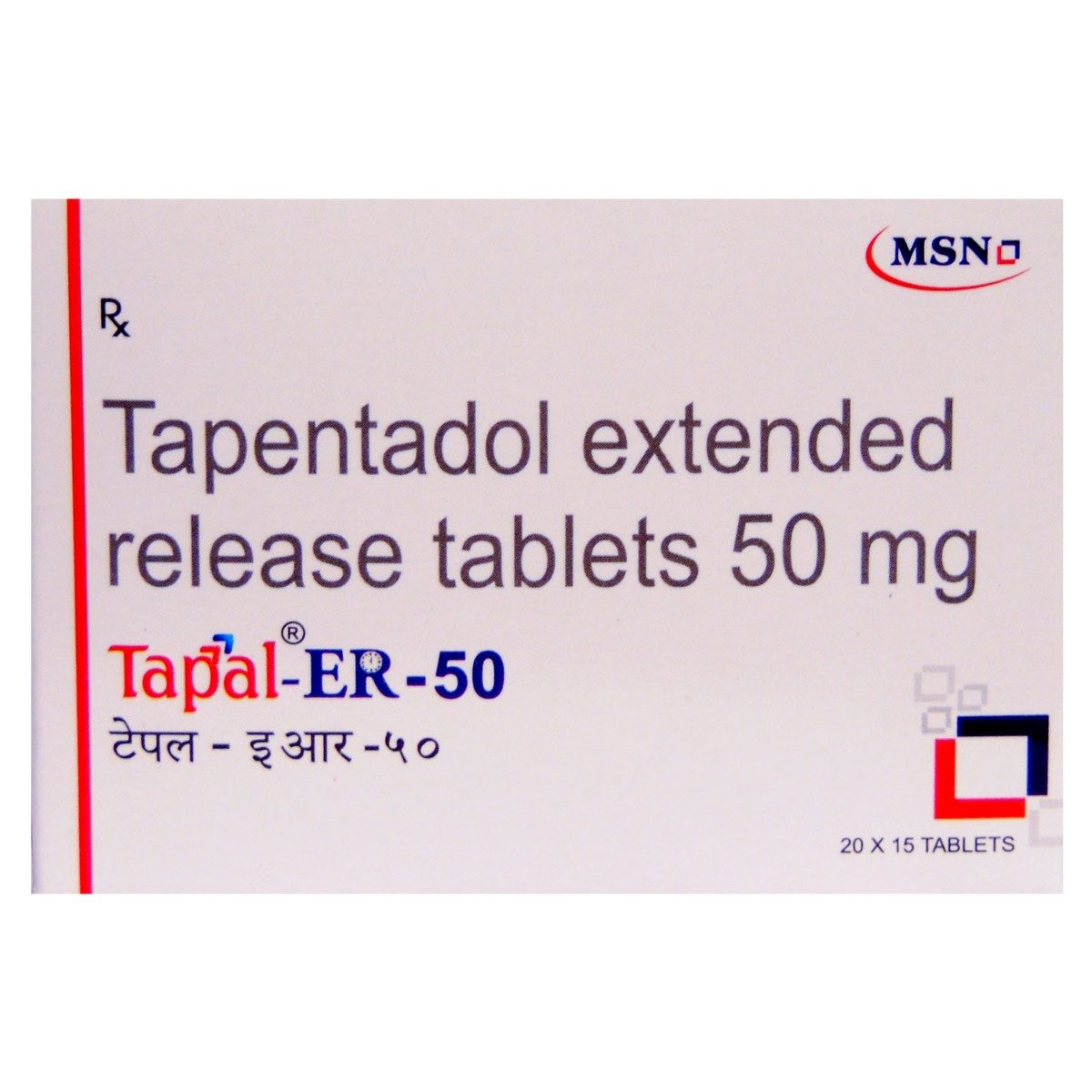
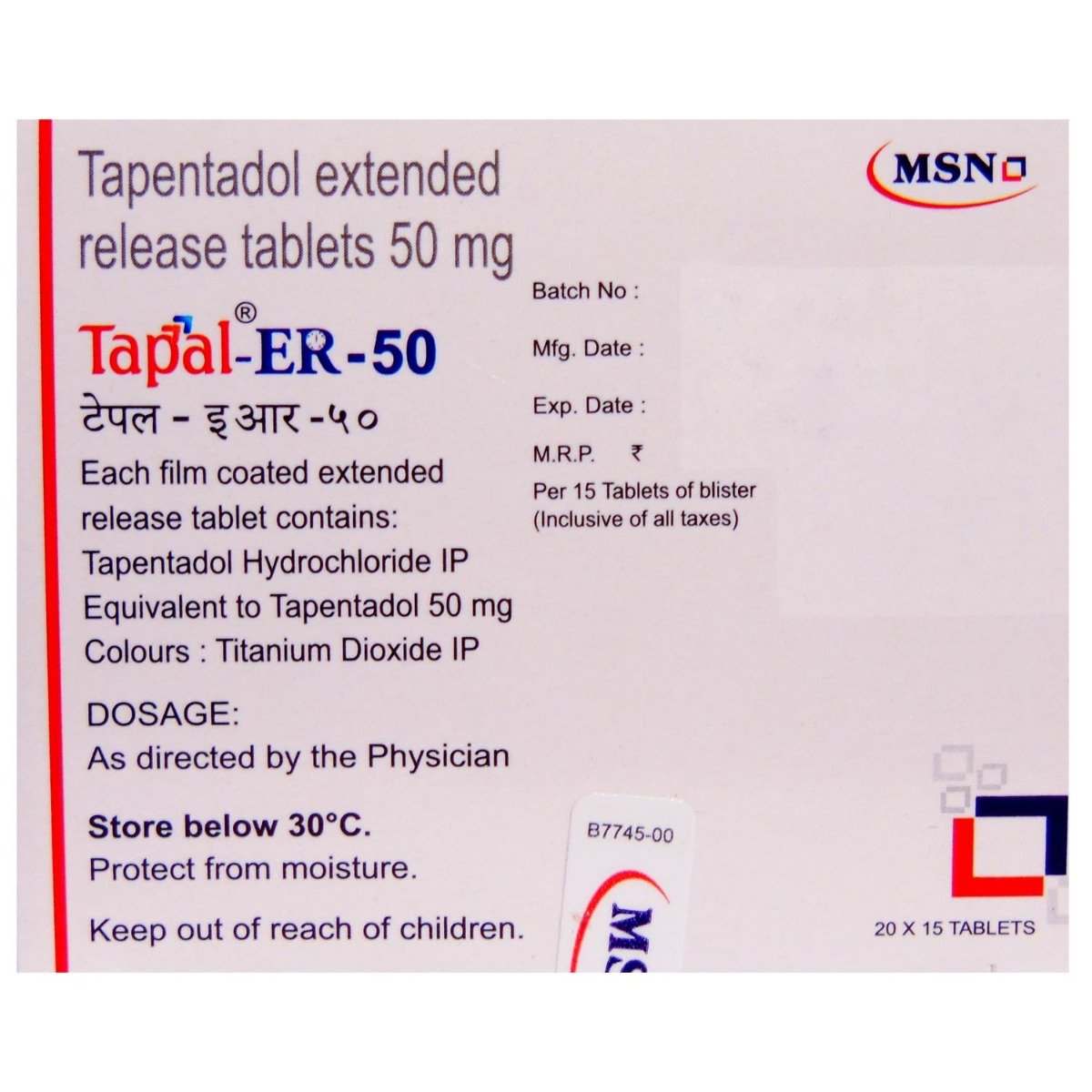

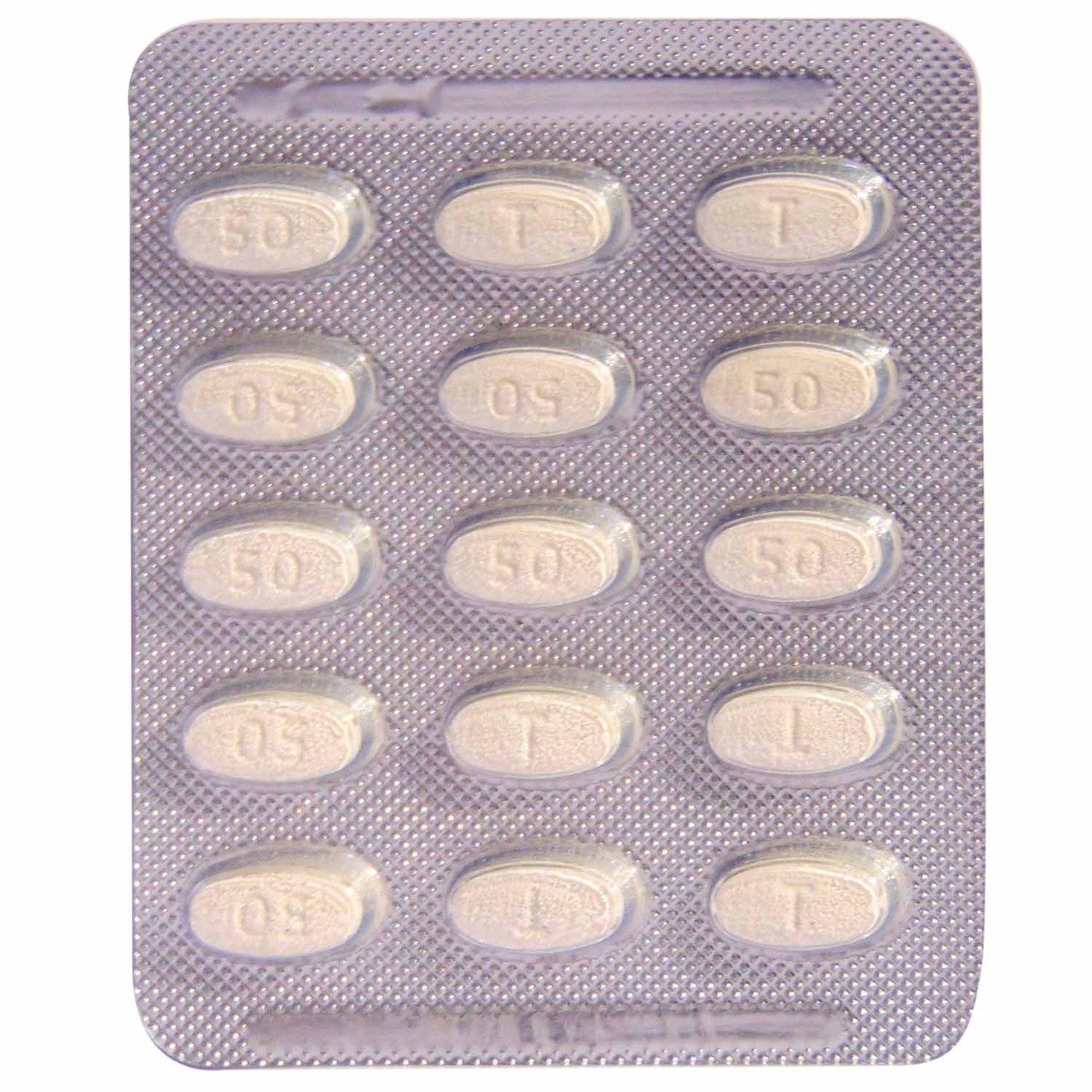
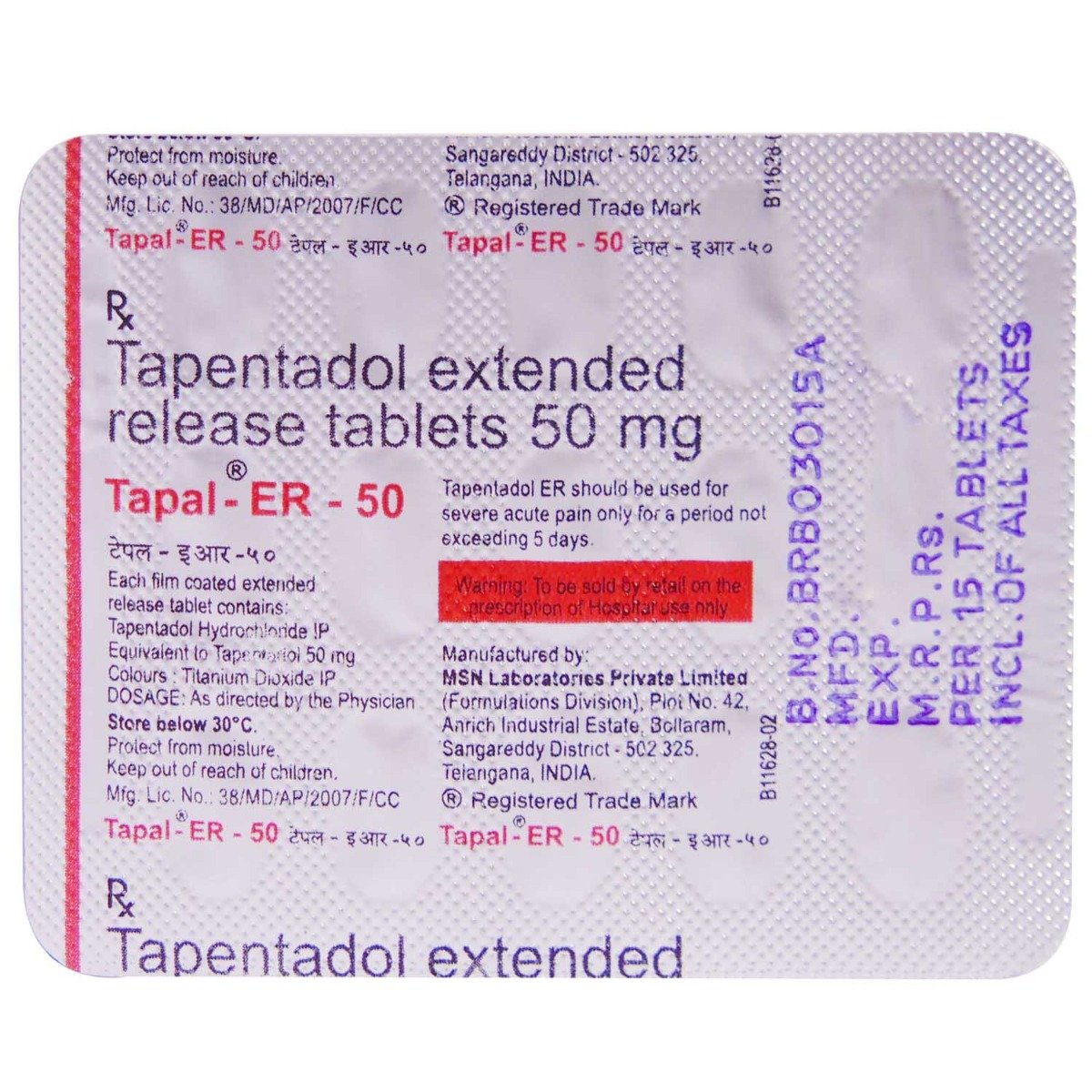
MRP ₹265.5
(Inclusive of all Taxes)
₹39.8 Cashback (15%)
know your delivery time
Provide Delivery Location
Composition :
Manufacturer/Marketer :
Consume Type :
Expires on or after :
Return Policy :
Selected Pack Size:15
15 ₹239
(₹15.93 per unit)
Out of stock

Secure Payment

Trusted by 8 Crore Indians

Genuine Products
Therapeutic Class
Country of origin
Manufacturer/Marketer address
Disclaimer
Alcohol
Safe if prescribed
Drinking alcohol while taking Tapal-ER-50 Tablet may aggravate some side effects, such as tiredness and dizziness.
Pregnancy
Consult your doctor
Tapal-ER-50 Tablet should not be used in pregnancy unless clearly necessary. So, if you are pregnant or suspect pregnancy, inform your doctor before taking this medicine. Your doctor will weigh the benefits and potential risks before prescribing Tapal-ER-50 Tablet .
Breast Feeding
Consult your doctor
There is little information available on the use of Tapal-ER-50 Tablet while breastfeeding. Because it has opioid agonist activity, it is preferable to use another medication, especially if you are nursing a newborn or preterm infant. Newborn infants appear to be especially sensitive to the effects of even low-dose narcotic analgesics.
Driving
Safe if prescribed
Do not drive or operate machinery as Tapal-ER-50 Tablet may impair the mental or physical abilities.
Liver
Consult your doctor
Tapal-ER-50 Tablet is not recommended in patients with severe liver problems. If you have moderate problems, your doctor will recommend a different dosage regimen. In case of mild liver problems, a dosage adjustment is not required.
Kidney
Consult your doctor
A dose adjustment is not required if you have mild to moderate kidney problems. Do not take Tapal-ER-50 Tablet if you have severe kidney problems.
Children
Safe if prescribed
Tablet forms of Tapentadol are not suggested for children and adolescents below the age of 18 years.
Product Substitutes
About Tapal-ER-50 Tablet
Tapal-ER-50 Tablet is an opioid painkiller used to alleviate moderate to severe pain. Pain is an unpleasant sensory and expressive experience caused by real or potential tissue injury.
Tapal-ER-50 Tablet composed of Tapentadol; it acts directly on opioid receptors in the central nervous system, reducing feelings of pain by interfering with the way neurons convey pain between the brain and the body.
Tapal-ER-50 Tablet should be taken only if prescribed by the doctor. The possible common side effects of Tapal-ER-50 Tablet are constipation, nausea, sleepiness, vomiting, tiredness, headache, dizziness, and abdominal pain. Report to your healthcare provider if any of these symptoms persist or worsen.
Inform your doctor if you are allergic to any content of this medicine before taking Tapal-ER-50 Tablet . If you have asthma or breathing problems, gastrointestinal obstruction, and paralysis of the gut or ileus, please let your doctor know before prescribing Tapal-ER-50 Tablet to you. Inform your doctor if you are experiencing acute poisoning from alcohol, sleeping pills, pain relievers, or other psychotropic medications. If you are pregnant, planning for pregnancy or breastfeeding, consult your doctor before taking this medicine. Do not discontinue Tapal-ER-50 Tablet without first consulting your doctor, and your doctor may gradually reduce the dose to avoid withdrawal symptoms.
Uses of Tapal-ER-50 Tablet
Medicinal Benefits Mweb
Key Benefits
Tapal-ER-50 Tablet is a strong painkiller that belongs to the class of opioids and is used for treating moderate to severe pain. Tapal-ER-50 Tablet acts directly on opioid receptors in the central nervous system, reducing feelings of pain by interfering with the way neurons convey pain between the brain and the body. Thus, it relieves the pain that occurs due to various medical conditions.
Directions for Use
Side Effects of Tapal-ER-50 Tablet
- Nausea
- Dizziness
- Vomiting
- Somnolence
- Decreased appetite
- Anxiety
- Confusion
- Hallucination
- Sleep problem
- Abnormal dreams
- Trembling
- Flushing
- Constipation
- Diarrhoea
- Indigestion
- Dry mouth
- Itching
- Increased sweating
- Rash
- Muscle cramps
- Feeling of weakness
- Fatigue
- Feeling of body temperature change
Drug Warnings
If you are hypersensitive or allergic to any of the ingredients in Tapal-ER-50 Tablet , do not take it. Please do not stop taking Tapal-ER-50 Tablet without first consulting your doctor, as this may result in withdrawal symptoms. If you are pregnant or nursing, do not take the Tapal-ER-50 Tablet unless your doctor has recommended it. Tapal-ER-50 Tablet may cause drowsiness and blurred vision; therefore, drive only if you are awake. Tapal-ER-50 Tablet is not recommended for children because its safety and effectiveness have not been proven. Drinking alcohol while taking Tapal-ER-50 Tablet may cause drowsiness and fatigue. If you are having suicidal thoughts, consult a doctor right away.
Drug-Drug Interactions
Drug-Drug Interactions
Login/Sign Up
Using Tapal-ER-50 Tablet together with Rasagiline might raise serotonin hormone levels in the body, affecting the brain and nerve cells. Increased serotonin hormone can lead to severe side effects.
How to manage the interaction:
Taking Tapal-ER-50 Tablet with rasagiline is generally avoided, but can be taken only if prescribed by a doctor. However, if you experience confusion, hallucination, seizure, extreme changes in blood pressure, increased heart rate, fever, excessive sweating, blurred vision, muscle spasm or stiffness, tremors, stomach cramps, nausea, vomiting, and diarrhea call a doctor right away. Do not discontinue any medications without consulting a doctor.
Using Tapal-ER-50 Tablet together with Naltrexone can block the effects of Tapal-ER-50 Tablet, which reduces its ability to effectively treat your illness.
How to manage the interaction:
Taking Tapal-ER-50 Tablet with Naltrexone is generally avoided as it can possibly result in an interaction, it can be taken if your doctor has advised it. However, if you experience confusion, hallucination, seizure, extreme changes in blood pressure, increased heart rate, fever, excessive sweating, blurred vision, muscle spasm or stiffness, tremors, stomach cramps, nausea, vomiting, and diarrhoea call a doctor right away. Do not stop using any medications without a doctor’s advice.
Using Tapal-ER-50 Tablet together with Safinamide can increase the risk of high blood pressure and serotonin syndrome (A condition resulting from the accumulation of high levels of serotonin in the body. Serotonin is especially a mood stabilizer).
How to manage the interaction:
Although using Safinamide and Tapal-ER-50 Tablet together may cause an interaction, they can be taken if prescribed by a doctor. Consult a doctor if you have symptoms such as confusion, hallucination, fits, blood pressure alteration, increased heart rate, fever, excessive sweating, shivering or shaking, blurred vision, pain in the muscles or stiffness, incoordination, stomach cramps, nausea, vomiting, and loose stools. Inform a doctor if you have recently taken amitriptyline. Do not discontinue any medications without consulting a doctor.
Using Tapal-ER-50 Tablet together with Isocarboxazid can increase the risk or severity of side effects like decreased breathing rate, irregular heart rhythms, or problems with movement and memory.
How to manage the interaction:
Taking Isocarboxazid with Tapal-ER-50 Tablet is generally avoided as it can result in an interaction, it can be taken when advised by a doctor. If you experience confusion, hallucination, seizure, extreme changes in blood pressure, increased heart rate, fever, excessive sweating, blurred vision, muscle spasm or stiffness, tremors, stomach cramps, nausea, vomiting, and diarrhea call a doctor right away.
Using Tapal-ER-50 Tablet together with Linezolid might raise serotonin hormone levels in the body, affecting the brain and nerve cells. Increased serotonin hormone can lead to severe side effects.
How to manage the interaction:
Taking Tapal-ER-50 Tablet with Linezolid is not recommended, consult a doctor before taking it. If you experience confusion, hallucination, seizure, extreme changes in blood pressure, increased heart rate, fever, excessive sweating, blurred vision, muscle spasm or stiffness, tremors, stomach cramps, nausea, vomiting, and diarrhea call a doctor right away. Do not stop using any medications without talking to a doctor.
Co-administration of Tapal-ER-50 Tablet together with Selegiline can increase the risk of serotonin syndrome (A condition resulting from the accumulation of high levels of serotonin in the body. Serotonin is a mood stabilizer).
How to manage the interaction:
Co-administration of Selegiline with Tapal-ER-50 Tablet is generally avoided as it can result in an interaction, but it can be taken if a doctor has advised it. If you experience confusion, hallucination, fits, extreme changes in blood pressure, increased heart rate, fever, excessive sweating, blurred vision, muscle spasm or stiffness, tremors, stomach cramps, nausea, vomiting, and diarrhea call a doctor. Do not discontinue any medications without consulting a doctor.
Taking Tapal-ER-50 Tablet with Oxycodone can increase the risk or severity of side effects like decreased breathing rate, irregular heart rhythms, or problems with movement and memory.
How to manage the interaction:
Taking Oxycodone with Tapal-ER-50 Tablet can result in an interaction, it can be taken if your doctor has advised it. Contact a doctor immediately if you experience signs such as drowsiness, lightheadedness, palpitations, confusion, severe weakness, or difficulty breathing. Do not discontinue any medications without consulting a doctor.
Co-administration of Tapal-ER-50 Tablet and Desvenlafaxine might raise serotonin hormone levels in the body, affecting the brain and nerve cells. Increased serotonin hormone can lead to severe side effects.
How to manage the interaction:
Co-administration of Tapal-ER-50 Tablet and Desvenlafaxine can lead to an interaction, it can be taken if advised by your doctor. However, if you experience any symptoms like confusion, hallucination, seizure, increased heart rate, fever, excessive sweating, shivering or shaking, blurred vision, muscle spasm or stiffness, tremors, incoordination, stomach cramps, nausea, vomiting, and diarrhea, consult the doctor immediately. Do not stop using any medications without a doctor's advice.
Co-administration of Tapal-ER-50 Tablet together with Dextromethorphan might raise serotonin hormone levels in the body, affecting the brain and nerve cells. Increased serotonin hormone can lead to severe side effects.
How to manage the interaction:
Although there is a possible interaction between Dextromethorphan and Tapal-ER-50 Tablet, you can take these medicines together if prescribed by a doctor. However, if you experience symptoms such as seizures (fits), extreme changes in blood pressure, confusion, hallucination, increased heart rate, fever, excessive sweating, shivering or shaking, tremors, incoordination, blurred vision, muscle spasm or stiffness, nausea, vomiting, stomach cramp, and diarrhea, contact a doctor immediately. Do not discontinue any medication without consulting a doctor.
Taking Tapal-ER-50 Tablet with Potassium clorazepate can increase the risk or severity of side effects like decreased breathing rate, irregular heart rhythms, or problems with movement and memory.
How to manage the interaction:
Taking Potassium clorazepate with Tapal-ER-50 Tablet can result in an interaction, it can be taken if your doctor has advised it. Contact a doctor immediately if you experience signs such as drowsiness, lightheadedness, palpitations, confusion, severe weakness, or difficulty breathing. Do not discontinue any medications without consulting a doctor.
Drug-Food Interactions
Drug-Food Interactions
Login/Sign Up
Drug-Diseases Interactions
Drug-Diseases Interactions
Login/Sign Up
Drug-Drug Interactions Checker List
- DULOXETINE
- DESVENLAFAXINE
- LINEZOLID
- PREGABALIN
- NALOXONE
- OXYCODONE
- DIAZEPAM
- ALPRAZOLAM
Habit Forming
Special Advise
- Do not take Tapal-ER-50 Tablet for longer than it is prescribed because repeatedly using it may make your body dependent on it. If you stop taking Tapal-ER-50 Tablet suddenly, it can cause withdrawal symptoms such as restlessness and irritability. The doctor will recommend that you reduce your dose slowly to prevent the risk of withdrawal effects.
- Tapal-ER-50 Tablet is a controlled drug, and you must take a prescription while travelling abroad.
Diet & Lifestyle Advise
- Include vitamin B and D-rich foods in your diet.
- Exercising regularly helps to improve overall health and combat pain.
- Rest well and get plenty of rest.
- Taking a warm bath can be very relaxing.
- Avoid smoking and drinking alcohol.
- Meditation and yoga can reduce stress and pain sensitivity and improve coping skills.
- Acupuncture, by stimulating pressure points, can be beneficial.
- Massages with essential oils can help increase circulation.
All Substitutes & Brand Comparisons
RX
Out of StockNot for online saleDUOVOLT 50MG TABLET
Ipca Laboratories Ltd
₹126.5
(₹11.39 per unit)
28% CHEAPERRX
Not for online saleTapdol 50 Tablet 10's
Eris Life Sciences Ltd
₹130
(₹11.7 per unit)
26% CHEAPERRX
Not for online saleBkdol T 50 Tablet 10's
Biokindle Lifesciences Pvt Ltd
₹130
(₹11.7 per unit)
26% CHEAPER

Have a query?
Buy best C.n.s Drugs products by
Intas Pharmaceuticals Ltd
Sun Pharmaceutical Industries Ltd
Torrent Pharmaceuticals Ltd
Alkem Laboratories Ltd
Abbott India Ltd
Cipla Ltd
Alteus Biogenics Pvt Ltd
Micro Labs Ltd
Lupin Ltd
Ipca Laboratories Ltd
D D Pharmaceuticals Pvt Ltd
Icon Life Sciences
Mankind Pharma Pvt Ltd
Tripada Healthcare Pvt Ltd
Arinna Lifesciences Ltd
Linux Laboratories Pvt Ltd
East West Pharma India Pvt Ltd
La Renon Healthcare Pvt Ltd
Talent India Pvt Ltd
Tas Med India Pvt Ltd
Zydus Healthcare Ltd
Cnx Health Care Pvt Ltd
Eris Life Sciences Ltd
Leeford Healthcare Ltd
Emcure Pharmaceuticals Ltd
Macleods Pharmaceuticals Ltd
Sigmund Promedica
Aristo Pharmaceuticals Pvt Ltd
Dr Reddy's Laboratories Ltd
Troikaa Pharmaceuticals Ltd
Consern Pharma Ltd
Zydus Cadila
Shine Pharmaceuticals Ltd
Wockhardt Ltd
Ardent Life Sciences Pvt Ltd
Crescent Formulations Pvt Ltd
Theo Pharma Pvt Ltd
Reliance Formulation Pvt Ltd
Ikon Pharmaceuticals Pvt Ltd
Propel Healthcare
Neon Laboratories Ltd
Jagsam Pharma
Msn Laboratories Pvt Ltd
Morepen Laboratories Ltd
Pulse Pharmaceuticals
Sanofi India Ltd
Med Manor Organics Pvt Ltd
Hetero Healthcare Pvt Ltd
Novartis India Ltd
Crescent Therapeutics Ltd
Elder Pharmaceuticals Ltd
Solvate Laboratories Pvt Ltd
Akumentis Healthcare Ltd
Mova Pharmaceutical Pvt Ltd
Psyco Remedies Ltd
Tripada Lifecare Pvt Ltd
Ajanta Pharma Ltd
Cyrus Remedies Pvt Ltd
Medishri Healthcare Pvt Ltd
Cadila Healthcare Ltd
Glenmark Pharmaceuticals Ltd
Matteo Health Care Pvt Ltd
Hbc Life Sciences Pvt Ltd
Lyf Healthcare
Matias Healthcare Pvt Ltd
Mesmer Pharmaceuticals
Alembic Pharmaceuticals Ltd
Capital Pharma
Crescent Pharmaceuticals
Medopharm Pvt Ltd
Alniche Life Sciences Pvt Ltd
Kivi Labs Ltd
Talin Remedies Pvt Ltd
USV Pvt Ltd
Quince Lifesciences Pvt Ltd
Solis Pharmaceuticals
Infivis Life Care
Zuventus Healthcare Ltd
Cadila Pharmaceuticals Ltd
Pfizer Ltd
Wallace Pharmaceuticals Pvt Ltd
A N Pharmacia Laboratories Pvt Ltd
Blue Cross Laboratories Pvt Ltd
Jenburkt Pharmaceuticals Ltd
Lia Life Sciences Pvt Ltd
Mano Pharma
Medley Pharmaceuticals Ltd
Primus Remedies Pvt Ltd
FDC Ltd
Maneesh Pharmaceuticals Ltd
Apex Laboratories Pvt Ltd
Gagnant Healthcare Pvt Ltd
Ozone Pharmaceuticals Ltd
RPG Life Sciences Ltd
Strides Shasun Ltd
Unichem International
GlaxoSmithKline Pharmaceuticals Ltd
Kuresys Labs Pvt Ltd
LA Pharma
Trion Pharma India Llp



